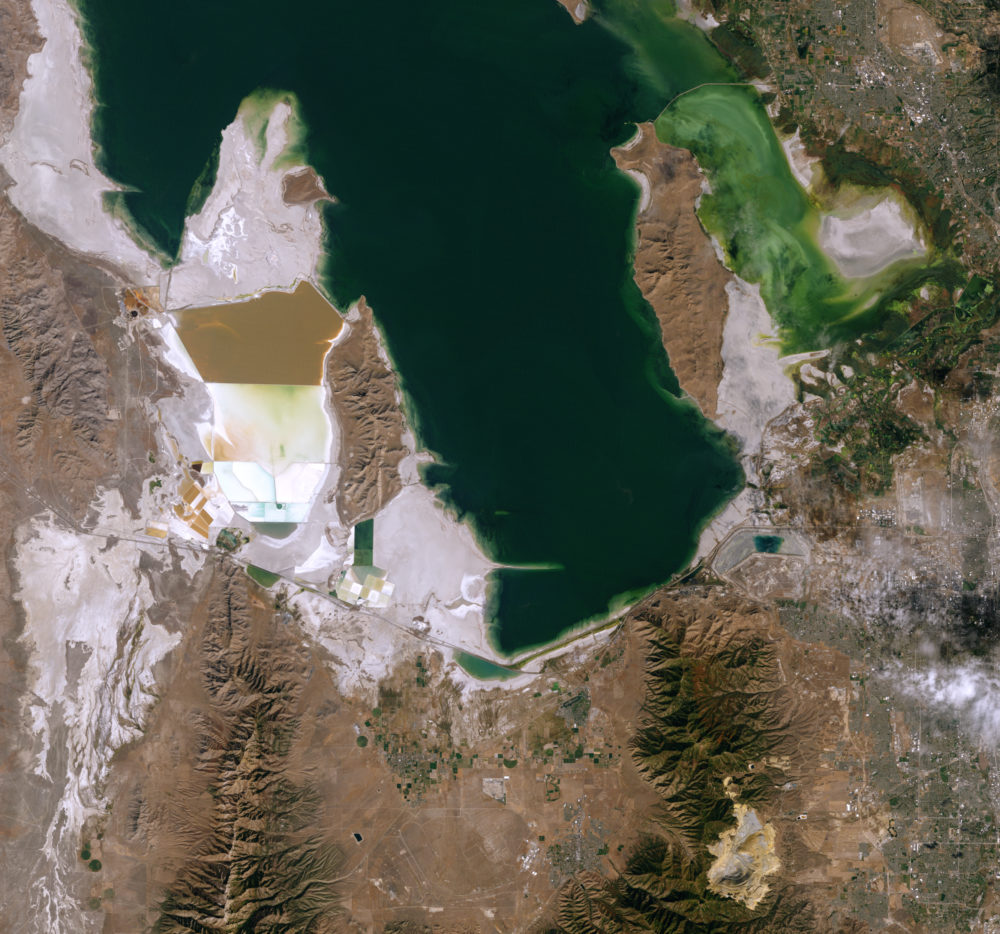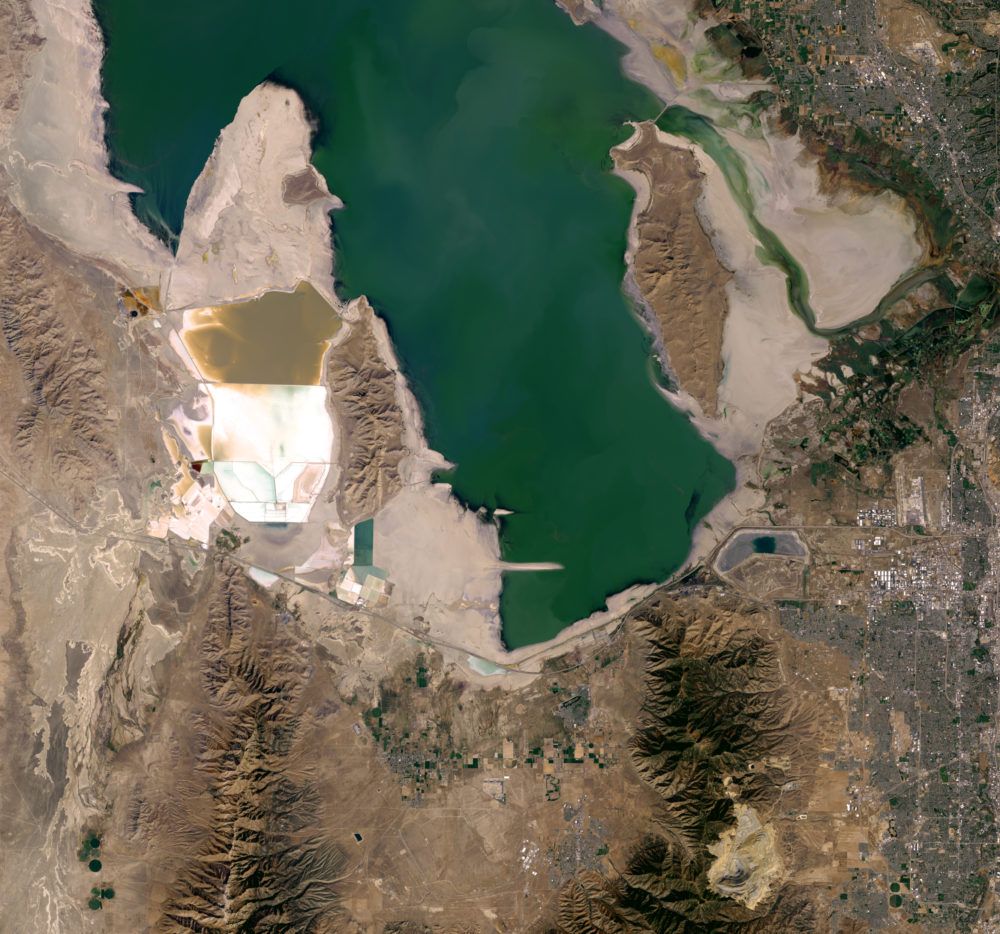Earth Day: USU professor studies the disappearing Great Salt Lake
The Great Salt Lake area has shrunk around 50 percent, said Wayne A. Wurtsbaugh, a retired aquatic ecologist and researcher at Utah State University.
“Although droughts and wet periods cause river inputs and lake levels to fluctuate, the level has persistently declined since pioneers arrived,” he said.
In Northern Utah lies the flourishing development of Salt Lake City. The lake spans approximately 1,700 square miles. Large water sources are critical for modern agriculture and urbanization to thrive, causing waterfront cities such as Salt Lake City to boom. Salt Lake City holds the title for highest job growth and more than double the population growth of the national average.
The Great Salt Lake contributes a projected $1.32 billion to the economy through a variety of purposes, such as mineral extraction and recreation.
Wurtsbaugh said increasing salinities would also impact the commercial brine shrimp industry, a $60 million endeavor of harvesting the resting eggs the shrimp produce.
The decrease in water volume would mean the salt content in the lake would go up per liter, leading to the growth of shrimp and the slowing of their breeding.
In an interview with The Salt Lake Tribune, the executive director of Friends of Great Salt Lake, Lynn de Freitas, said lowering water levels have “already prevented some of these businesses from investing to expand their operations.”
This endangers the growing economy of Salt Lake and is an issue being looked into by both ecologists and economists alike. According to Utah’s Wildlife Department, the Great Salt Lake system water supply gets 3,000,000 acre-feet of water from runoff, precipitation, and groundwater from connected rivers.
 Joshua Stevens/NAS
Joshua Stevens/NAS Photo of the Great Salt Lake taken September 24, 2011
“Water development and river diversions since 1847 have produced a persistent reduction of flow into the lake, approaching 40 percent in recent years,” Wurtsbaugh wrote in an email. “Much of the diverted water is lost via evaporation from agricultural fields, urban landscaping and industrial activity.”
Since the pioneers began developing river water, these withdrawals have caused the lake to drop about 3/4 of a foot every 10 years, Wurtsbaugh said. However, In the last 20 years, the decrease has been less, about 1/4 of a foot every 10 years.
The difficulty in handling water management from this point forward in the saline lake is being analyzed by Wurtsbaugh and his team of researchers. They believe that there are a couple of approaches to water management. The first step to properly manage the volume of the Great Salt Lake is to record and analyze where the water is going and the exact amount that is consumed without return to the lake, and the amount that is recycled back.
Following the analysis, Wurtsbaugh and his team propose two international solutions to solve the issue.
“The State is pushing ahead to further develop the Bear River, and this would drop the lake even further,” Wurtsbaugh said.
The Bear River Compact, a three-state organization that manages water development in the Bear River, plans to further increase development and reduce water returns to the Great Salt Lake.
According to Wurtsbaugh, decreases the systems water by 550,000 acre-feet. He estimates that this will “expose a total of 680,000 acres of lakebed.”
 Joshua Stevens/NASA
Joshua Stevens/NASA Photo of the Great Salt Lake taken September 20, 2016
“Science can provide the information needed to support the difficult choice between saline lake preservation and ongoing increases in consumptive use of water,” Wurtsbaugh said.
The practices of agriculture and business will need to adapt to the new conservation needs of the Great Salt Lake, he said. This could lead to a temporary decline in economic status until new methods are in place to protect the Salt Lake.
He said “proposals to allocate additional water to preserve saline lakes will meet social, political and economic challenges.”
It is likely that the industries that rely on the water usage without conservation will put up a battle to protect their current practices that continue draining the lake. Wurtsbaugh said he hopes the citizens and politicians will put their trust in science to solve an issue that could potentially disrupt the future growth of Salt Lake City and its surrounding beneficiaries of the Great Salt Lake’s contents.
The Great Salt Lake not only provides a strong economic suit, but yields a home to millions of birds. As the primary water body in the state of Utah it houses a diverse population of insects and animals. From a salt water body to freshwater wetlands, the region holds numerous river systems and habitats for all kinds of species. Wildlife would be forced to migrate or likely die in the process due to a decrease in their food supply.
Wurtsbaugh believes that there is more people can do to get involved in water conservation. He recommends xeriscaping, a practice in landscaping that requires little irrigation commonly seen in states with low rainfall such as Arizona.
He also recommend that people voice concerns to the new Cache Water Conservancy District. It is up to the state of Utah, from citizens to politicians, researchers to businesses, to propose a solution or continue the status quo.
For more information on the decrease of saline lakes across the world, including the Great Salt Lake, and the solutions researchers are proposing, you can visit the research article written by Wurtsbaugh and his team here.
— KyleF217@gmail.com
@Kylelele_


My teacher at PJHS MsDay told me to look at this and I’m amazed at this because I never seen this before